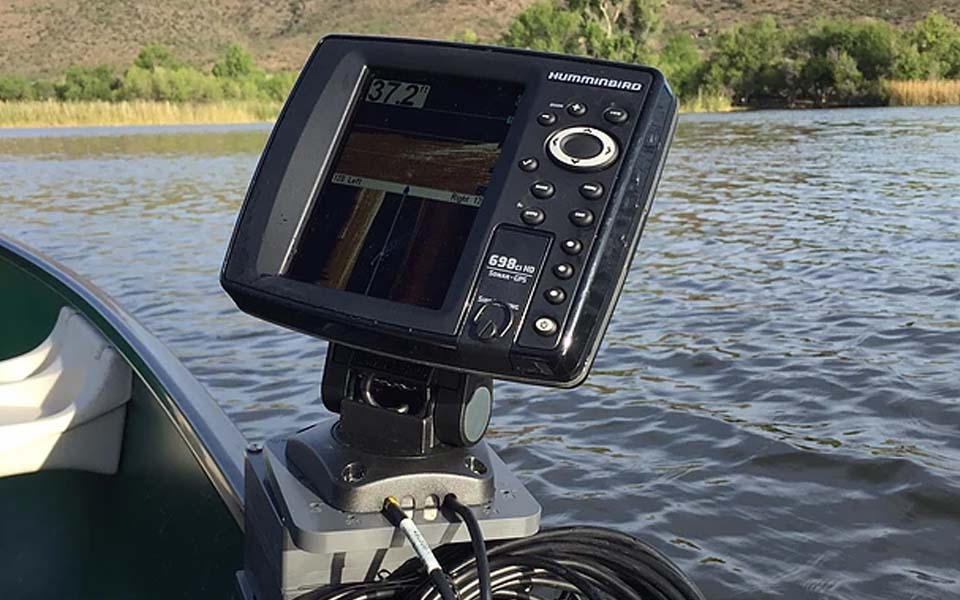Installing your fishfinder correctly will allow you to get the most out of it, from angling to bridge fishing the results are equally impressive. The installation process requires keenness and a high degree of accuracy, so in the long run, the process might take a long period of time to complete. When all’s said and done, the fishfinder will make your life easier, they are not only used for fish finding, but their applications extend to other countless applications; bay fishing, angling, finding submerged items in water and much more, I digress.
Here are easy detailed steps on how to properly install a fishfinder on your boat.
Mounting the binnacle mount
Before mounting the binnacle on your boat, first, pick the most suitable position to install it. Fishfinders vary in size and shape, most can be fitted on the helm of the boat easily, the helm is easy to reach and has the best view. The device should be in a comfortable position with regard to your height, between waist and shoulder length. Avoid placing the unit above your head, neck strain will disadvantage you.
Ensure the unit does not come into contact with fixed equipment on the boat such as the windshield, throttle or the compass. Most importantly don’t overthink it, mount the unit using your height as the benchmark.
Check the helm from the underside to the bottom, ensure there are no obstructions in the bottom part that might prevent any bolts or wires from protruding. You can also use this opportunity
to check for a power bus and ensuring the terminals are compatible.
Once you have confirmed that all the factors suitable for binnacle mounting are safe, use the binnacle to mark the position
where the holes will be drilled using a pencil or any visible marker.
Using a drill at full power perforate the holes, avoid drilling chipped or irregular holes, the fewer the better. Make sure the holes can comfortably accommodate the unit wires. You can carry out a test run before permanently fixing the unit.
Supplying power to the fishfinder
The method you use to supply power to the fishfinder all comes down to the wires you have. Some might need shortening and others might need to be extended if you don’t have an easy way out and you are required to lengthen or shorten them, use copper wires and the correct color for each cable.
Use crimped barrel connectors to make the wire-wire connections; for safety reasons, never use solder. Also never get rid of the manufacturers in-line fuse, it could lead to blowing up of the unit or disqualifying an active warranty.
After taking all these compatibility and safety measures into consideration, insert the wires into the previously drilled exit holes. The plug should have enough room to extend to the unit without any extra wiring being exposed outside the helm.
Now run the wire to your helm’s fuse block. Wrap the wires after every 18 inches with cushioned clamps or tie wraps at the same time keeping them as tight as possible. Connect the wires using heat shrink tubing or ring connectors then leave the ends disconnected while you carry on with other parts of the fishfinder setup.
Mounting the transducer
Fixing the transducer at the right position is very important, stand at the back of the transom and look for the deepest point on the hull (the part that is always in contact with water) that doesn’t have any obstacles. Any obstruction will create water turbulence causing inaccurate reading on the fishfinder. Make sure it is at least 15 inches from the boat’s propeller or the readings will be inaccurate due to turbulence.
After locating the best spot on the hull. Place the transducer close to the transom and moderate its position until the front part of the transducer is an eighth of an inch from the bottom of the hull and perfectly horizontal to the surface of the hull. It is important that the transducer should be still when the boat is moving, so take your time when installing it.
Make accurate marks on the positions where the mounting holes and wires will pass through. Before you get to the screwdrivers and wires to fix them permanently, now’s the best time to join the transducer wires that were left disconnected with the dashboard.
If this is done after permanent mounting, you might distort the sealant holding the wires together. If your boat had a transducer you can cut off any part of the wire and use connectors to join the dashboard with the transducer.
When the wiring is complete, coil any extra wire inside the helm and use cushioned clamps to securely hold it in place. Remember, never cut the transducer wires down to size since additional electrical resistance is likely to occur, consequently causing the efficiency of the fishfinder to decrease.
Also never bundle the transducer wire with the engine wires or use the VHF cable when wiring the transducer, it might cause electrical interference.
Finalizing the installation
After mounting the binnacle mount, the transducer and wiring it’s now time to fix the fishfinder itself and finalize the wiring. To complete the setup use a sealant to protect the helm where the wiring holes were drilled, Before taking the boat for a test run make sure the sealant has dried completely.
Switch off the battery then connect the power leads, plug the transducer and power wires to the back of the fishfinder and you are ready to go.
Conclusion
Is everything functioning properly? Now put down those tools and have fun with your installed fishfinder. The process is slow and can sometimes get frustrating, but after a test drive and the fish finder starts working you will certainly be proud of your work and let the frustration or fatigue drown in excitement.
When you hit full throttle, there is a high chance the transducer will rise above the water and no readings will be displayed on the fishfinder, maintain an average speed or less when fishing. Consider using a waterproof cover to maximize the span of the fish finder.
Keeping the manufacturer’s manual close due to any warning is recommended.

